
JR East x KDDI's “Flexible Life Design Project” aiming to develop “human-driven” decentralized city planning
In our previous series of note, the members of the JR East Shinagawa Development Project Team have been introducing the ideas and efforts of their project in the area around Takanawa Gateway Station, as well as the specific details of the development.
>>https://note.com/tokyoyard
In this post, we are introducing to you the “Flexible Life Design Project”, a new decentralized city planning project in collaboration with KDDI. Announced at the end of last year, the project sets the Shinagawa Development Project as its core. Mikito Maruno of JR East and Miyuki Muranishi and Seika Yokota of KDDI are here to tell you all about it.
Virtual and physical assets that resonate with decentralization
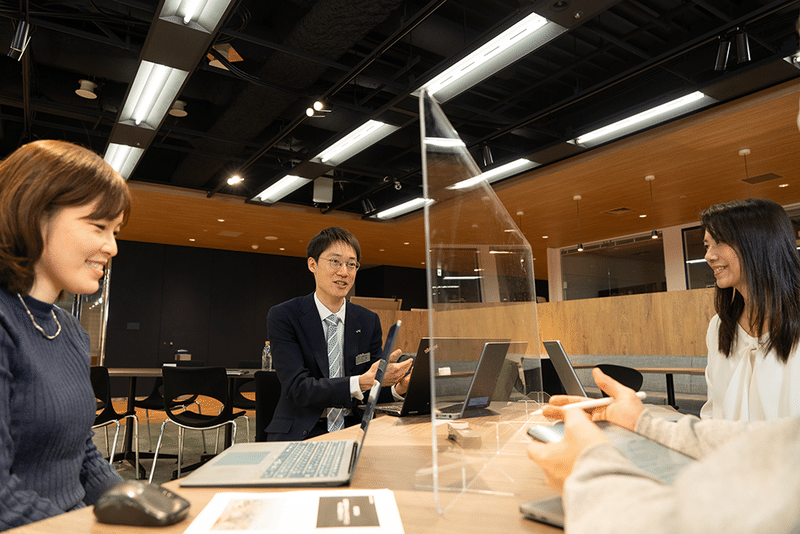
From left: Sayaka Yokota, Mikito Maruno, and Miyuki Muranishi
─ To start, what is a “Flexible Life Design Project”? Could you give us a general overview?
Maruno:
It is a project dedicated to creating satellite cities across Japan. It sets the “Shinagawa Development Project”, being undertaken by JR East and promoted around the Takanawa Gateway Station as well as the Shinagawa-Takanawa area, as its core city.
Based on JR East's network of physical transportation and KDDI's network of telecommunications, the concept of the project is to create a new decentralized city that fuses the ”physical” space of stations, towns, and transportation with the ”virtual” space of communications to create diverse work/life -styles that are not limited by location or time.
─ Which ideas in particular overlapped between JR East and KDDI to lead to this collaboration?
Yokota:
We began discussing the specifics of collaboration with JR East in April 2020, just after the state of emergency was declared last year. The spread of the COVID-19 had triggered a turning point that shook lifestyles, work styles, and the values of society itself, and there was a need to decentralize the flow of people in order to prevent the spread of the virus.
Until now, the norm was to go work in the city center, but with the spread of work-from-home style, people are realizing that it is not necessary to come to the office every day. In order to create services that are close to people's lives, we believe that it would be more important to design a space that brings the place of work closer to people's daily lives. Thus, we came up with the idea of decentralizing urban development from aspects of both the physical and the virtual spaces.
─ So, that’s how the physical and virtual assets of both companies have overlapped.
Muranishi:
Yes, and we are aware that the assets of both companies are physical and virtual. By joining forces, we can consider the customer experience in the virtual space provided by KDDI and that of the physical space, which cannot be supplemented by virtual assets alone, through JR East's infrastructure.
Mr. Maruno:
KDDI's technology for providing digital services is something that JR East lacks, since we have mainly been providing physical infrastructure. We also lack the speed and flexibility to carry out these projects, so I believe that we can complement each other better through collaboration.
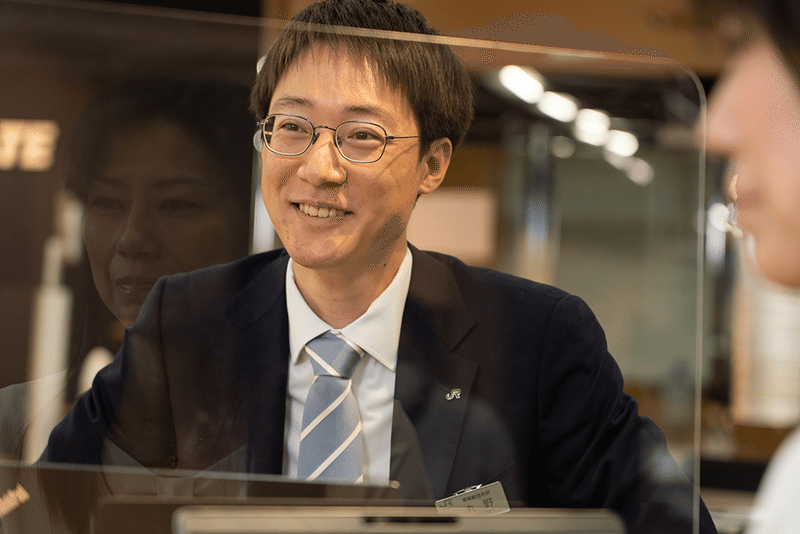
Mikito Maruno (JR): Life-style Business-development Department, Shinagawa Business-development and Marketing Division. He is engaged in collaborative creation projects with corporations, as well as being in charge of service planning with KDDI Corporation.
Yokota:
Our main business as a telecommunications carrier has been to provide network infrastructure and platforms that are subtle in the eyes of the customers, but recently we have been focusing on creating service value that is delivered directly to customers, such as life design services.
It is also very important for us to be able to provide our customers with their daily needs in both virtual and physical spaces, regardless of location. This is the concept of “Flexible Life Design”. We can finally utilize the data and know-how that we have accumulated through virtual space, in a large-scale and physical space of city planning like the “Shinagawa Development Project” and keep on experimenting. This was the big appeal for us.
“Human-driven” city planning to achieve a “decentralized society”
─ Which challenges were the starting points for the “Flexible Life Design Project” to promote decentralized city planning?
Maruno:
This was triggered by the spread of the COVID-19, but at the same time, there was a sense of urgency about whether urban development in Tokyo should continue in the same way.
─ Could you elaborate?
Maruno:
The conventional urban development has been a “hub-intensive city planning” where people, goods, resources/energy, information, technologies, and offices are all centralized in urban areas for efficiency.
In other words, a single concept of the city was the basis for attracting people. If this is the case, the city will be built according to the convenience of real estate developers, who want to attract more people and produce revenue through the efficient use of land.
Rather than creating a town from the perspective of the developers, we will provide options that optimize the town according to people's lifestyles, from a “human-driven” perspective, so that the city center, the local community, and the people can coexist in an organic way. We believe that this is the solution and the type of decentralized city planning we want to achieve.
─ What kind of challenges and people’s needs will you focus on when developing a “human-driven” city?
Yokota:
In the Flexible Life Design Project, we are planning to provide value such as “workplace”, “mobility”, and “visitor services” to people who work, live, and visit.
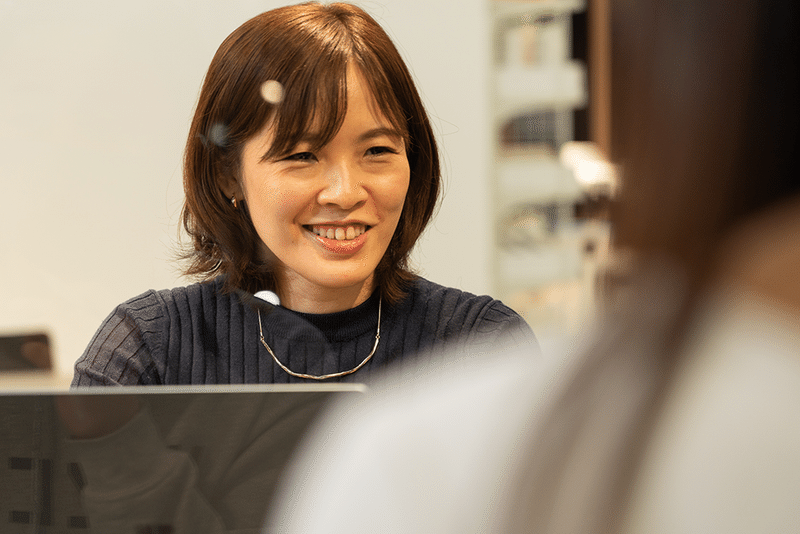
Seika Yokota (KDDI): Corporate Strategy Planning Department, Corporate Planning Division and Business Incubation Promotion Division. She is engaged in the launch of new businesses through collaborative creation with corporations. In this project, she is in charge of business development and project management.
“Workplace” provides a space that allows people to work in ways beyond the traditional concept of space. Regardless of locations, workers can be as productive as they would be at an office and connect to the information they want in real time. “Mobility” is the study and implementation of last mile mobility services that connect the new city, its surrounding areas, and other major cities. “Visitor services” is the provision of entertainment and other content that makes everyone want to stop by Takanawa Gateway Station and its surrounding areas.
With “work” as our first focal point, each of these services will be studied, tested, and implemented in stages before the opening of the city in 2024.
─ Why did you choose to focus on “work” first?
Muranishi:
Since people work five days a week, working naturally accounts for a significant portion of their lives. Therefore, people decide where to live based on where they work. Hence, workers and their families live near the workplace, where livelihood is born. Subsequently, culture, community, and industry are formed.
However, when the choices of workplaces are fixed, people's lives inevitably become tied to them. We view this as one of the reasons for the centralization of Tokyo, and believe that we need to question the whole concept of “workplace”.

Miyuki Muranishi (KDDI): Corporate Strategy Planning Department, Business Incubation Promotion Division. She is engaged in planning and promotion of new businesses. In this project, she is mainly in charge of planning and management of the consortium.
Maruno:
In order to change the shape of conventional “centralized metropolitan cities”, various urban development projects have been carried out in the suburbs, such as the development of commuter towns. However, since the workplaces have always been in the city center, people have to commute long distances to work. Hence, the commuter towns in the suburbs only function as a place for “living”, and as a result, the economic bloc remains centralized in the city center. In other words, the distance between “living” and “working” tended to be far apart.
Rather than having the city center and the suburbs/rural separate work and living, we can reduce the distance between the two by firmly connecting them through digital and physical networks, and allow people to work under both environments in the same way. By doing so, we can create an equal relationship between the city center and the suburbs. With this in mind, we decided to start with achieving a “flexible life design work style.
Creating core/satellite cities connected by “challenges” that transcends time and space
─ What specific services will you provide to achieve a “flexible life design work style”?
Maruno:
First, JR East and KDDI will build a communication infrastructure and urban operating system based on 5G in the new core city, to be created by the Shinagawa Development Project. We are also considering the provision of network infrastructure services necessary for urban functions such as security, cleaning, logistics, parking, and disaster prevention.
In terms of “work”, the construction of these networks and infrastructures is expected to serve as a platform for business creation that transcends the limitations of time and space to connect with satellite cities across Japan, and even overseas, to create new businesses.
─ What kind of initiatives will you be promoting in the satellite cities across the suburbs and other parts of Japan?
Yokota:
As our first step in achieving the “flexible life design work style”, we will support the decentralization of work styles by developing distributed workplaces. Specifically, we are considering the implementation of the following functions to each workplace: distributed virtual project rooms that integrate the spaces of distant conference rooms, an intranet connection and switching function that allows users to connect to the same environment as within the company once they enter the room, and resumable conference rooms that can be linked to IDs to recreate the project environment and start meetings from where they left off.

Muranishi:
While work-from-home style is spreading, one of the challenges that has become most apparent is the weakness of communication in a distributed online environment.
We believe that many people feel the frustration of having audio and video delays, since the network capacity in home are often not up to par when making constant connection to multiple company meetings and live viewing. Also, while someone is talking, it is difficult for others to speak or chat, and the meeting tends to be more like a one-sided speech than actual communication.
By coordinating video qualities and the way the sounds are heard at a distance similar to that of the actual space, it is possible to bring online communication closer to a realistic and physical experience. We are planning to conduct these proof-of-concept (hereinafter called) experiments from this May.
─ You mentioned satellite cities throughout Japan, but have you decided on which areas to be covered?
Maruno:
At the phase of PoC experiment, we are thinking of starting with connecting the Tokyo metropolitan area, so we are planning to cover the cities in Tokyo, Kanagawa, and Saitama as hubs.
─ I see. What kind of criteria will be applied to decide which cities will be covered as satellites?
Yokota:
The PoC experiment will be conducted in the metropolitan area, where the largest number of people live, and its major cities, as well as cities composed mainly of residential areas. However, we will not simply define satellite cities by location and proceed with development, but will gradually develop them according to needs and challenges.
Taking workers as an example, the challenges for customers in the suburbs is that they used to commute to the city center every day, but now, the COVID-19 situation has made it difficult for them to go to Tokyo for work. On the other hand, the issue for people in rural areas is not to go to the center of the city, but to develop independent industries and attract people to the area.
For this project, we have positioned the new city around Takanawa Gateway Station as the core city. So, when it comes to connecting the urban area of Tokyo with cities and places beyond it, we do use words like suburban and rural. However, rather than creating bases while defining the boundaries between the city center, suburbs, and rural areas, our goal is to provide spatial services that transcend physical constraints to meet the challenges of each type of location, such as suburban type, working vacation type, and industrial creation type.
Mr. Maruno:
JR East has data on the flow of people using Suica, and KDDI has data based on location information, within the range that can be used by corporations, derived from smartphones. We can hypothesize about where people are going on a daily basis and for what purpose, and we will build an environment that meets the challenges concluded from this hypothesis.
Shinkansen Workplace and the “Shinagawa Development Project” as a greenfield opportunity
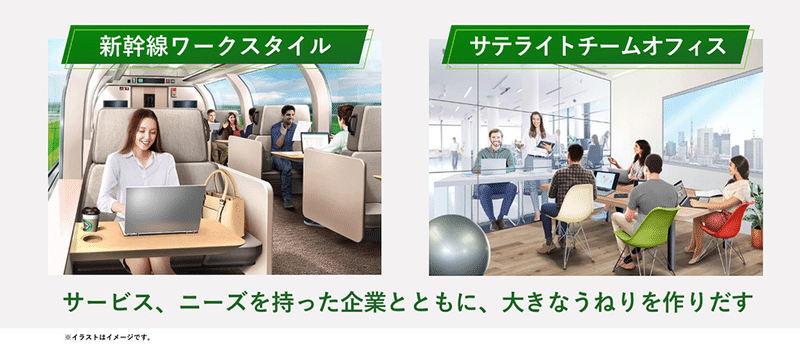
─ In addition to the decentralized workplace, you are also planning to conduct a PoC experiment for the “Shinkansen Workplace” (in session from February 2021). However, if you already have your personal belongings or a Wi-Fi router loaned by the company, you are able to work in your seat. What exactly is the difference?
Maruno:
On a normal Shinkansen, you have to go out on the deck to make calls. The difference is that in the “remote work recommended cars”, that will be set up for this PoC experiment, calls and web conferences can be held in the seats. Although this is a simple concept for the current proving test, we believe that there is a strong demand for in-car calls and web conferencing, and we believe that breaking through this barrier will be quite significant. Going forward, based on the results of questionnaires obtained from the experiment, we are considering creating an environment in the train that will make it easier for more people to work. Also, our concept is to provide an environment and options that allow people to work seamlessly on the move, rather than just working in the Shinkansen Workplace because they want to.
Muranishi:
While KDDI is promoting the deployment of 5G nationwide, we believe that we need to provide a high-speed, high-capacity, high-quality communications environment in spaces where people can work on the move, and Shinkansen office is a great example of this.
For this reason, this PoC experiment will help us understand what kind of communication needs there are on the Shinkansen as a space for users to work on the go, which will help us to provide a comfortable environment for users in the future.
─ I believe that the combination of the Shinkansen and 5G is a unique attempt by JR East as a railroad company and KDDI as a telecommunication carrier, but what is unique about this project as a whole? I think connected city and smart city concepts are being implemented all over the world, not just in the “Shinagawa Development Project”.
Yokota:
First of all, even from a global perspective, there are not many projects with a vast greenfield opportunity that start from scratch like the Shinagawa Development Project. The city itself is being developed based on the concept of an “experimental field”, and a field where services can be developed based on people’s needs is attractive beyond our position as a single telecommunication carrier.
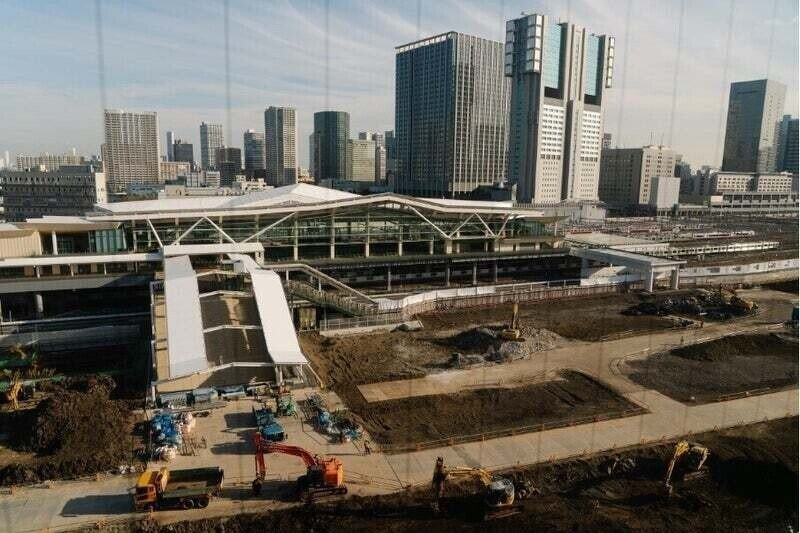
In addition, the big appeal of decentralized city planning that we are promoting, is that it does not try to manage a certain town or city with digital technology, as is generally the case with smart cities, but rather it connects the them to a wider area, both physical and virtual, according to people’s needs.
Maruno:
This project is unique in that it is an integrated city planning project for the entire Ekimachi (station and town) area, and is also connected to other areas beyond the station through a physical network.
Furthermore, the new city, which will serve as a core, is very close to the airport as well as the railroad, making it an access point for both land and air. In other words, there are a lot of people visiting the area, so it can be a field of exchange. This too is one of the main features of the project.
What the “Flexible Life Design Consortium” is trying to achieve
─ Another important feature of the Flexible Space Project is the establishment of the “Flexible Life Design Consortium”. What is the purpose of the “Flexible Life Design Consortium”?
Maruno:
It is a cross-sectional gathering of partners from various fields, with the aim of creating new value and culture through fusing the physical and the virtual. The establishment of the consortium itself was proposed to us by KDDI.
KDDI is many steps ahead of us in terms of open innovation, and we thought that we should promote the project by soliciting ideas and assets from various participants.
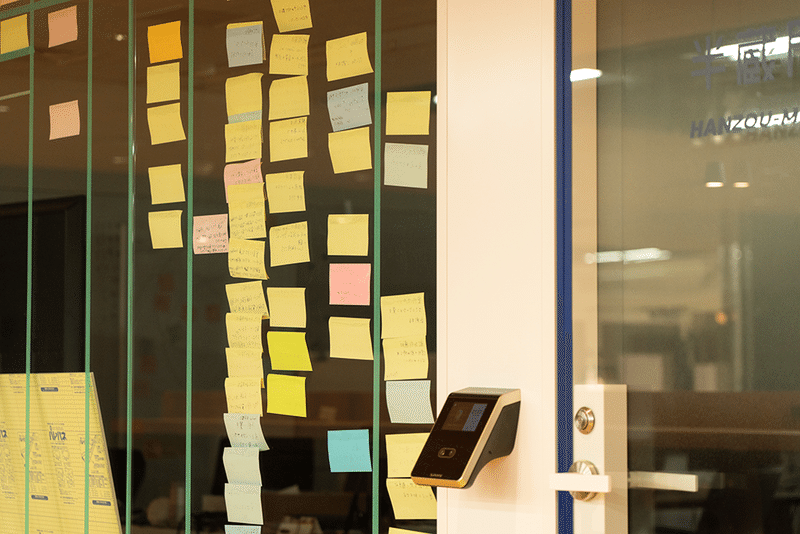
─ Specifically, what kind of participants do you hope to see in the future?
Muranishi:
We would like to have people from all walks of life involved, from start-ups to large corporations, local governments, and experts, who share our idea of a lifestyle that is not bound by time or place.
In doing so, we would like to invite companies that can bring their assets to the PoC experiment that will be held in May to plan, verify, and commercialize the service, as well as people who can contribute additional ideas to our service in using the Workplace.
Maruno:
Going forward, the consortium will launch workplace community activities to provide information, exchange opinions, and conduct PoC experiments with corporate customers who are concerned about improving their working environment and businesses that have expertise in providing workplace services. The first step is to develop a decentralized city based on the concept of “work”, but we also need to look beyond ”work” to ”living,” ”playing,” and other aspects of life.
There are not that many examples of urban development on the scale of the Shinagawa Development Project, and this is the first time for JR East, so I don't think it is something that JR East and KDDI can achieve by ourselves. As the way people are connected is constantly changing, we need to consider the kind of connections that people need, as we work with people who share our belief in the value of “human-driven” decentralized city planning.
Interview and Edit by Takuya Wada
Photograph by Yutaro Yamaguchi
Translation by Keitaro Takama
Content Direction by blkswn publishers Inc.
#TokyoYard #TokyoYardPROJECT #TakanawaGatewayStation #urbandevelopment #Tokyo #Flexible Life Design Project #KDDI #society #business #community #communication #urbandevelopment #Satellitecity #decentralizedcityplanning #Mobility #SmartCity #5G #Satelliteoffice
#Remotework #Telework #ShinkansenWorkplace #Shinkansenoffice #decentralized
この記事が気に入ったらサポートをしてみませんか?
